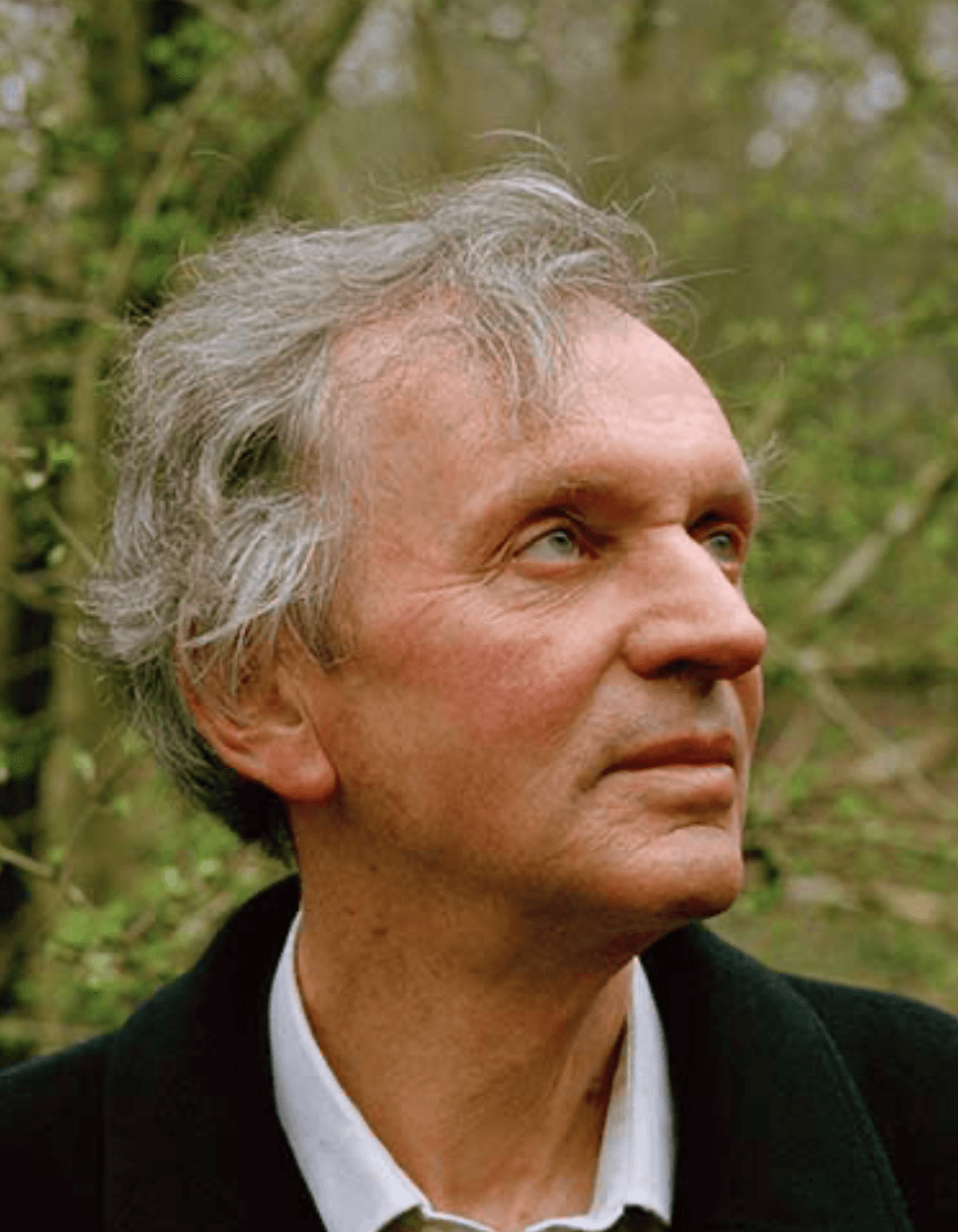Elder Voices of the Millennium: Rupert Sheldrake
Maria Fonseca
Fri Jul 25 2025

Rupert Sheldrake is a biologist and author best known for his theory of morphic fields and morphic resonance, which propose that nature has a memory influencing form and behavior. Trained at Cambridge and Harvard, he later embraced spiritual perspectives during his time in India. Sheldrake challenged scientific dogmas, advocating for a more open, exploratory approach to consciousness and biology. His work invites us to see the universe as a living, interconnected field of evolving patterns. Today, the notion of interconnection that underpins his work is becoming increasingly mainstream, inviting us to see the universe as a living, evolving web of relationships.
Elder Voices of the Millennium: Rupert Sheldrake
The Courageous Biologist Listening to the Memory of the World
In an age defined by accelerating knowledge and shrinking certainties, few scientists have dared to challenge the very foundations of modern science with the clarity and courage of Rupert Sheldrake. A trained biologist, a spiritual seeker, and a tireless interrogator of scientific orthodoxy, Sheldrake has spent his life asking unsettling questions—questions that don’t fit neatly within the borders of conventional biology but instead press up against the edges of metaphysics, mysticism, and memory.
What if nature is not solely governed by fixed laws but by habits? What if behavior, form, and learning are influenced by a kind of collective memory, stored not in genes or neurons but in fields of resonance that span space and time? These are not the questions of a fringe mystic, but of a scientist who once stood at the heart of British academia—and who now stands just beyond it, calmly calling for a renaissance of wonder in science.
Roots of an Unconventional Mind
Born in 1942 in the English town of Newark-on-Trent, Rupert Sheldrake grew up surrounded by the tools of observation. His father was a pharmacist and amateur naturalist who nurtured in young Rupert a keen interest in the living world. He went on to study at Clare College, Cambridge, where he excelled in natural sciences and later earned a PhD in biochemistry. A Frank Knox Fellowship took him to Harvard, where he immersed himself in the history and philosophy of science.
Returning to Cambridge, Sheldrake became a research fellow of the Royal Society and focused his work on plant physiology and morphogenesis—the processes by which plants grow and take form. But even amid his academic success, he was quietly experiencing a growing dissatisfaction. The reductionist model of life as machine and DNA as destiny felt, to him, incomplete.
“The more I studied biology,” he later wrote, “the more I felt that the mechanistic theory was like a 19th-century cathedral: impressive, well-built, but fundamentally empty.”
The Indian Revelation
A turning point came when Sheldrake spent time in India working with crop improvement at the International Crops Research Institute in Hyderabad. There, he developed a friendship with the Benedictine monk Bede Griffiths, who introduced him to Vedantic philosophy and the notion of a conscious, interconnected universe.
In this Eastern context, Sheldrake’s scientific inquiries deepened. He encountered a living tradition that didn’t separate nature from consciousness or mind from matter. These experiences catalyzed his departure from orthodox scientific frameworks and helped plant the seeds of his most controversial and enduring idea.
Morphic Fields and the Memory of Nature
In 1981, Sheldrake published A New Science of Life, which proposed the idea of morphic fields—non-material organizing principles that shape the development and behavior of living systems. Closely related is his theory of morphic resonance, which posits that similar forms and patterns across time and space are connected by a kind of memory field.
He writes:
“Morphic fields are not fixed, like the supposed laws of nature, but evolve. The fields contain a kind of cumulative memory, based on what has happened before in the past.”
— The Presence of the Past (1988)
According to Sheldrake, when a behavior, structure, or pattern is repeated frequently enough—whether in a crystal, a biological form, or a cultural practice—it establishes a “morphic field” that influences subsequent occurrences. In this way, rats that learn a maze in London might make it easier for rats in New York to learn the same maze, simply because the pattern has already been established.
This idea is striking because it suggests that memory is a property of nature itself, not just the domain of brains or archives.
“The hypothesis of morphic resonance proposes that memory is inherent in nature. Most of the so-called laws of nature may be more like habits.”
— Science Set Free (2012)
His critics were swift and scathing. The journal Nature notoriously called A New Science of Life “a book for burning.” Yet Sheldrake remained undeterred. He was not interested in fame or scientific conformity, but in the honest pursuit of truth.

Throughout his career, this dedication propelled him to produce over 100 scientific papers and nine books, alongside co-authoring six more, with his work translated into 28 languages around the world. His influence was recognized in 2013 when he was named among the top 100 Global Thought Leaders by the Duttweiler Institute, Switzerland’s leading think tank. On ResearchGate, Sheldrake ranks within the top 4% of scientists by Research Interest Score, while his extensive citations on Google Scholar have earned him an impressive h-index of 45 and an i10-index of 133. For twelve consecutive years, Watkins Mind Body Spirit magazine has named him one of the most spiritually influential living figures. His groundbreaking ideas have reached wide audiences through major media outlets including New Scientist, The Guardian, Discover Magazine, The Spectator, The Washington Post, Die Zeit, and BBC radio and television.

Asking Forbidden Questions
Sheldrake’s work did not end with biology. Over the decades, he has explored animal telepathy, the extended mind, and the limits of materialist science. In his book Dogs That Know When Their Owners Are Coming Home, he documents decades of research into pet behavior that defies conventional explanations, suggesting that animals too may be responding to morphic fields or subtle forms of telepathy.
What unites these seemingly disparate investigations is his deep belief that science should remain a method of open inquiry, not a dogmatic system. In his best-known critique of scientific orthodoxy, The Science Delusion (2012), he identifies ten core assumptions that underlie modern science—such as that nature is mechanical, consciousness is brain-based, and that matter is unconscious—and challenges each of them with data, reason, and philosophical insight.
“The belief system that governs conventional scientific thinking is an act of faith... It rests upon ten unexamined assumptions, or dogmas. These are the default worldview of most educated people. But are they true?”
— The Science Delusion (2012)
Sheldrake does not claim certainty. Rather, he opens the door to possibilities: that consciousness may extend beyond the skull; that forms may self-organize not just by chemistry but by memory; that science, far from being discredited by mystery, is renewed by it.
A Life in Soulful Inquiry
Today, Rupert Sheldrake resides in London with his wife, Jill Purce, a pioneering voice therapist and spiritual teacher. Their son, Merlin Sheldrake, has inherited the family tradition of bold biological thinking—his acclaimed book Entangled Life explores the hidden intelligence of fungi with poetic reverence.
Rupert remains a quiet but persistent voice at the edges of mainstream science—lecturing, writing, and conducting experiments with the kind of calm resolve that comes from a deeper spiritual grounding.
“I believe we are on the threshold of a major transformation in science... We are moving beyond an old, mechanistic worldview into one that recognizes the creativity, spontaneity, and connectedness of the living world.”
— The Rebirth of Nature (1990)
This vision is not naïve. It does not reject data, rigor, or skepticism. Instead, it seeks to restore a sense of humility and wonder to science—a recognition that the universe may be more alive, more intelligent, and more interconnected than we have dared to believe.
A Living Legacy
As one of the elder voices of the millennium, Rupert Sheldrake speaks not only from the laboratory but from the crossroads of science, spirituality, and soul. He is a man who dares to ask whether nature remembers, whether the mind extends beyond the body, and whether the cosmos itself is a field of living memory.
In an era hungering for new paradigms—ecological, philosophical, and spiritual—Sheldrake’s work offers more than controversy. It offers hope: that we are not isolated fragments in a dead universe, but participants in a vast, evolving story where every form has a memory, and every memory a future.
Further Reading and Listening:
A New Science of Life (1981)
The Presence of the Past (1988)
Science Set Free / The Science Delusion (2012)
previous
Subnivium: The Secret Ecosystem No One Knows About
next
Cosmic Consciousness: A Journey Through Time, Thought, and Being
Share this

Maria Fonseca
Maria Fonseca is an interdisciplinary educator, writer, artist and researcher whose work bridges the realms of academic knowledge, community engagement, and spiritual inquiry. With a background in Fine Art and a doctorate in creative practice, Maria has spent over a decade exploring the intersections of human experience, cultural meaning, and collective transformation.










